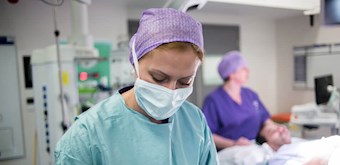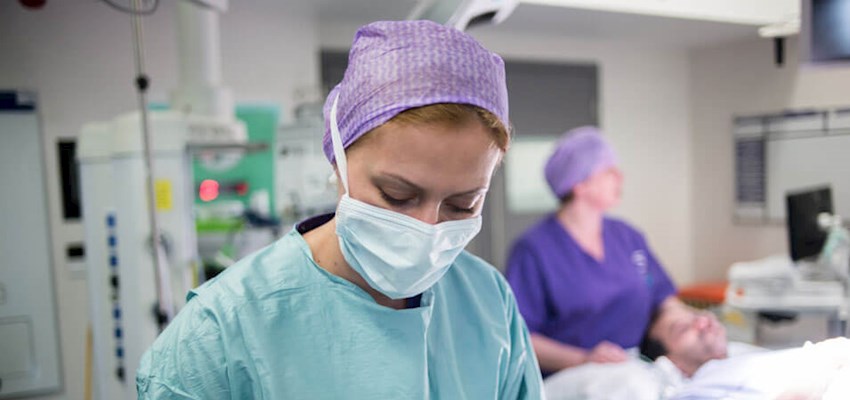Epigastric (midline) hernia repair
Surgery for a hernia between the belly button and breastbone
If you have a lump between your belly button and breastbone, it may be an epigastric hernia. HCA UK can help.
What is an epigastric hernia?
An epigastric hernia occurs when fatty tissue pushes through your abdomen, between your navel (belly button) and your sternum (breastbone), creating a lump or swelling.
Surgery is an effective treatment option to remove an epigastric hernia.
Surgery is an effective treatment option to remove an epigastric hernia.
Need to know
-
What happens during surgery? icon plus
Your GP or consultant will examine the affected area and may refer you for an ultrasound scan. This is a painless and non-invasive test to confirm the diagnosis.
Before recommending surgery, your consultant will consider:
- risk of strangulation (if the hernia contains parts of your bowel)
- if your symptoms are getting worse
- the effect it is having on you daily
You will be admitted on the day of surgery unless there are any reasons which may require you to be admitted the day before.
Your consultant will tell you how to prepare for your operation. They will talk you through the risks and side effects involved and answer any questions you may have. -
How to prepare icon plus
Your consultant will make a cut over the epigastric hernia to free up the ‘hernial sac’. Intestine or other tissue inside the sac will be carefully pushed back into your abdominal cavity. The excess sac may be tied off or removed.
The weak spot where the hernia was located will be closed with strong, secure stitches, or a patch of synthetic nylon mesh may be used if the hernia is particularly large. A waterproof dressing will be placed over the area.
A general anaesthetic is usually used during epigastric hernia repair, so you will be asleep throughout the procedure and feel no pain.
The repair generally takes about half an hour. -
After surgery icon plus
You may experience some bruising, swelling and discomfort in your abdominal area after the procedure. Painkillers (either injections or tablets) should help with this in the first 24-48 hours following your surgery.
You may be able to go home on the day of the procedure, although it’s sometimes necessary to stay overnight.
Activity is encouraged but you should avoid putting any strain on your abdomen for at least 4 weeks.
It is important to avoid constipation and straining when you go to the toilet. Eating plenty of fibre and drinking lots of fluids should help.
Your consultant may advise you not to drive for at least a week after surgery.
Our hernia specialists
We're proud to work with leading experts across a range of medical fields, whose skills are matched by their integrity and compassion.




Our locations
From complex gastric surgery to minor procedures, we provide exceptional care across our network of hospitals, outpatient centres and specialist clinics.
Book an appointment
Our team can help with any enquiries or you can make an appointment with one of our experienced consultants.
Call us today
020 7079 4344
This content is intended for general information only and does not replace the need for personal advice from a qualified health professional.